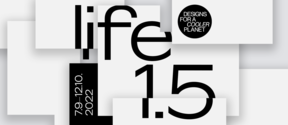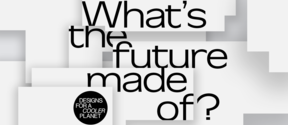Fluff Stuff: Textile fillings from rewetted peatlands
An exhibition featuring prototype textile products and fillings, ranging from interior textiles to fashion apparel.

Clothes matter. Dressing up is a form of imagination and self-expression. It’s one way we distinguish Saturday from Monday, work from holiday and night from day. It’s part of belonging to a culture and a time period.
If we want to keep enjoying fashion and cut down our carbon footprint, we have to take care of the clothes we already have. So, mend that old cardigan and swap wardrobes with a friend, but significant lifestyle changes are only possible if we also make broader systemic shifts.
Your future wardrobe can be a sumptuous collection of upcycled garments and high-tech clothes, such as sun-powered textiles, floral leather and modular outfits. Materials and colours in your future garments can be sourced from a field or forest, leftover materials or agricultural side streams, like willow bark or onion skins.
The bad news. The fashion industry produces up to 10 percent of global greenhouse gas emissions and is also one of the biggest polluters. If you thought flying was bad, check this out: the fashion industry consumes more energy than international flights and maritime shipping combined.
The good news. We’re building the transition towards less polluting materials, business models for slow fashion and industrial processes for upcycling, recycling and repairing our clothes and textiles.
Explore these science and design collaborations that pave the road towards a better future. Welcome to visit the exhibitions also in person during 7.9. - 12.10. (Väre, Otaniementie 14).

An exhibition featuring prototype textile products and fillings, ranging from interior textiles to fashion apparel.

An exhibition of prototypes of state-of-the-art textiles, clothing and fashion innovations from Aalto. These aren't design science fiction: they’re already well on their way to becoming reality.

What are the most effective ways to reduce the environmental load of fashion? Through new business understanding and new design strategies.

This exhibition showcases a new method to produce textiles from cellulose-rich raw material without the use of toxic chemicals or expensive solvents.
Read more about our main theme and explore the projects of the other sub-themes:

Designs for a Cooler Planet is a five-week-long festival celebrating experiments in planet-friendly materials, fashion, and food.

Planet-friendly alternatives for materials, mindsets and architecture.

Better alternatives for food, food systems and packaging.
The event is a part of Helsinki Design Week’s official festival programme and a World Circular Economy Forum 2022 (WCEF) side event. Aalto University is also one of the EU's New European Bauhaus partners.
#ACoolerPlanet #HelsinkiDesignWeek #NewEuropeanBauhaus #WCEF2022